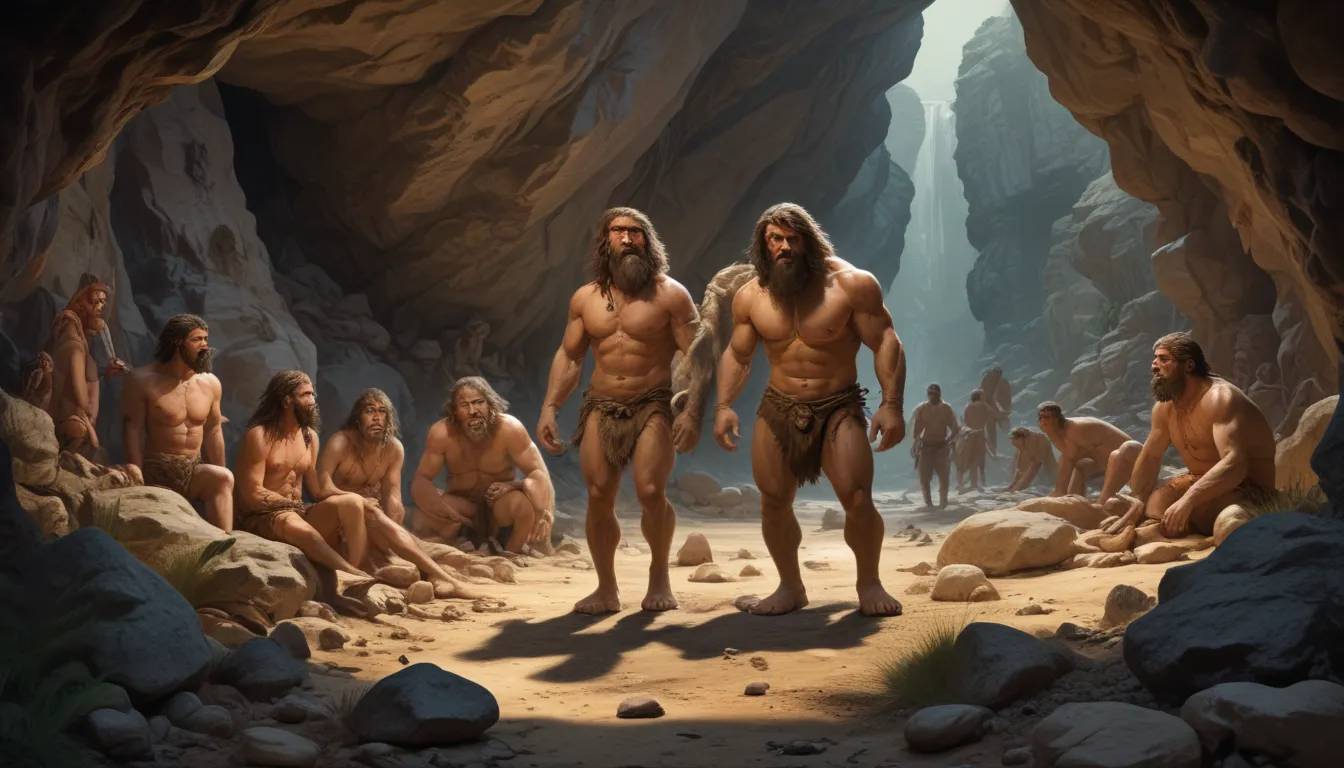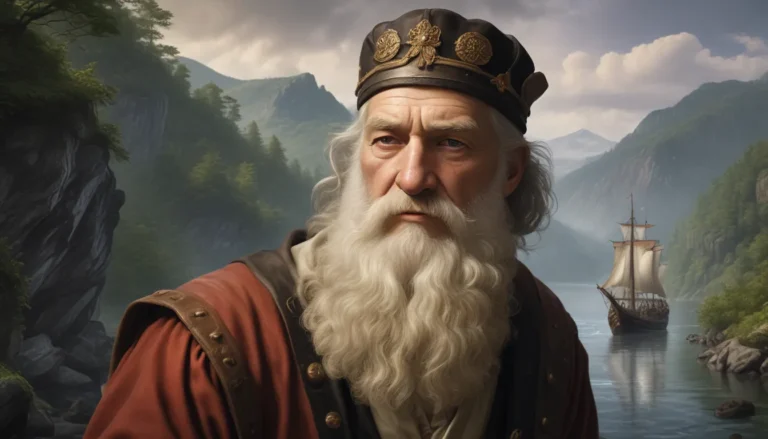The images in our articles may not match the content exactly. They are used to grab your attention, not to show the exact details in the text. The images complement the text but do not replace it.
Have you ever wondered what life was really like for cavemen? Journey back in time with us as we delve into the mysterious world of our ancient ancestors. Cavemen, those enigmatic figures from prehistoric times, have always piqued our curiosity. Beyond the stereotypical grunts and caves, these early humans had complex lives, rich cultures, and survival skills that continue to fascinate us today. Join us as we uncover 23 captivating facts about cavemen that are sure to intrigue, educate, and maybe even challenge your perceptions of these ancient beings.
Exploring the World of Cavemen
Cavemen, a term often associated with primitive humans living in caves, actually encompass a diverse group of early human ancestors spanning various prehistoric periods. From Neanderthals to Homo sapiens, these individuals inhabited the Paleolithic era, characterized by the development of stone tools and a unique way of life that shaped the course of human evolution.
- Cavemen were not a singular species but rather a diverse array of early human ancestors, each with their own distinct characteristics and adaptations.
The Language of Cavemen
Communication was vital for the survival of cavemen, enabling them to cooperate, hunt, and establish social structures within their communities.
- While the exact nature of cavemen’s communication remains a topic of research, it is believed that they utilized a combination of vocal sounds, gestures, and rudimentary forms of language to convey information.
- Evidence of visual art in the form of cave paintings and carvings suggests that cavemen also used imagery as a means of communication, depicting scenes from their daily lives and beliefs.
Hunting and Gathering in Cavemen’s World
The diet of cavemen was diverse and reliant on their ability to hunt wild animals and gather plant-based foods from their surroundings.
- As hunters and gatherers, cavemen consumed a wide range of foods, including meat from wild animals, fish, fruits, nuts, and vegetables, depending on their environment and resources.
- To aid in hunting, cavemen developed sophisticated tools and weapons such as spears and bows, demonstrating their ingenuity and resourcefulness in obtaining food.
The Artistic and Cultural Legacy of Cavemen
Cavemen were not just survivalists but also artists, leaving behind a rich legacy of prehistoric art that offers a glimpse into their beliefs, lives, and environments.
- Famous sites like the Lascaux Caves in France and the Altamira Cave in Spain are renowned for their stunning cave paintings, showcasing intricate depictions of animals, human figures, and symbolic symbols.
- These artworks serve as valuable artifacts that provide insights into the cultural practices and artistic expressions of early humans, highlighting their creativity and storytelling abilities.
Harnessing the Power of Fire
The discovery of fire was a transformative moment in the lives of cavemen, revolutionizing their daily activities and enhancing their ability to survive in challenging environments.
- Fire provided cavemen with warmth, protection from predators, and a method for cooking food, making nutrients more accessible and meals safer to consume.
- Evidence suggests that early humans began using fire approximately 1.5 million years ago, marking a significant advancement in their technological capabilities and adaptability.
Shelter and Clothing in the World of Cavemen
While caves served as natural shelters for cavemen, they also demonstrated their resourcefulness by constructing simple huts and shelters using readily available materials.
- In addition to caves, cavemen built shelters from branches, animal skins, and other natural resources to protect themselves from the elements and create a sense of security.
- Clothing made from animal skins and furs was essential for insulation and protection against the cold, showcasing their adaptability to diverse climates and environments.
The Social Dynamics of Cavemen Communities
Living in groups was essential for cavemen’s survival, emphasizing the importance of cooperation, social structure, and division of labor within their communities.
- Cavemen likely had social structures based on age, gender, and skills, with distinct roles and responsibilities assigned to each member of the group.
- This cooperative framework enabled cavemen to work together effectively in activities such as hunting, gathering, and defending against potential threats from predators.
Advancements in Tools and Technology
The development of tools marked a significant milestone in the evolution of early humans, showcasing their ability to innovate and adapt to their surroundings.
- Early tools crafted from stone, wood, and bones allowed cavemen to perform tasks such as hunting, food preparation, and construction, demonstrating their problem-solving skills and dexterity.
- Over time, the refinement of tools led to technological advancements like the invention of the wheel, which revolutionized transportation and trade networks, showcasing their progress in enhancing their capabilities and expanding their horizons.
The Evolutionary Journey of Cavemen
Cavemen were not static beings but instead evolved and migrated over thousands of years, adapting to different environments and climates as they spread across the globe.
- Homo sapiens, the direct ancestors of modern humans, first appeared in Africa around 300,000 years ago before embarking on migrations that eventually led to their global dispersal.
- This migration and adaptation process allowed early humans to thrive in diverse environments and interact with other species, contributing to the genetic diversity and evolutionary history of humankind.
Interactions with Other Hominin Species
Cavemen coexisted with and interacted with other hominin species such as Neanderthals, shaping the genetic legacy of modern humans in unexpected ways.
- Evidence suggests that Neanderthals and Homo sapiens lived contemporaneously in certain regions and even interbred, leaving a genetic imprint that is still present in some populations today.
- These interactions between different early human species highlight the complexity and interconnectedness of our evolutionary history, showcasing the diverse relationships and adaptations that shaped our collective genetic heritage.
The Legacy of Cavemen in Modern Culture
The enduring legacy of cavemen continues to capture the imagination of people around the world, inspiring artistic representations, scientific inquiries, and cultural reflections on our shared past.
- Depicted in literature, movies, and popular media, cavemen are often portrayed with a mix of humor and awe, reflecting our fascination with their resilience, ingenuity, and adaptability.
- Despite their portrayal as primitive beings, the survival skills and innovations of cavemen laid the foundation for modern human civilization, underscoring the enduring impact of their contributions on our present-day lives and cultural narratives.
Reflecting on Our Ancestral Roots
As we reflect on the lives of cavemen and the richness of their historical legacy, we gain a deeper appreciation for the complexities and nuances of human evolution. Their innovative tools, expressive art, and communal structures offer profound insights into the ingenuity and resilience of our ancient ancestors. By exploring and understanding the past, we not only enrich our knowledge of history but also cultivate a sense of connection to our shared evolutionary journey. Let us carry forward this curiosity and respect for our ancestors as we continue to uncover the mysteries of human prehistory and celebrate the enduring spirit of adaptation, innovation, and survival that defines our collective heritage.
Frequently Asked Questions
What Were Cavemen?
Cavemen, often depicted in popular culture as primitive beings, were actually early humans and their ancestors who lived during the Paleolithic era, using simple tools and residing in caves or natural shelters.
Did Cavemen Hunt Dinosaurs?
No, cavemen did not hunt dinosaurs as they were extinct long before the first human ancestors appeared on Earth. Early humans hunted contemporary animals such as mammoths and woolly rhinos for sustenance.
How Did Cavemen Communicate?
Early humans relied on basic sounds, gestures, and visual cues such as cave paintings to communicate ideas, stories, and warnings to each other, laying the foundation for the development of more complex forms of language.
What Did Cavemen Eat?
Cavemen were hunter-gatherers, consuming a varied diet of meat from animals they hunted and plants, nuts, and fruits they gathered from their surroundings, depending on the availability of resources in their environment.
Were All Cavemen the Same?
Far from it! The term “caveman” encompasses a diverse array of early human species with unique characteristics, adaptations, and behaviors, each contributing to the tapestry of human evolutionary history.
How Did Cavemen Make Fire?
Early humans developed methods such as striking rocks together to create sparks or using friction to generate heat and ignite dry wood, harnessing the power of fire for cooking, warmth, and protection.
Did Cavemen Create Art?
Absolutely! Cavemen created stunning works of art, including cave paintings and carvings, that showcased their artistic abilities and provided valuable insights into their lives, beliefs, and cultural practices.
What Was Cavemen’s Contribution to Modern Humans?
Our caveman ancestors laid the groundwork for modern civilization by developing tools, utilizing fire, and establishing the fundamentals of communication and social structure, shaping the trajectory of human progress and innovation.
Embrace the Journey of Discovery
Our dedication to providing engaging and reliable content is at the core of our mission. Each fact shared on our platform is contributed by real users like you, enriching our collective knowledge and understanding of the world. With a commitment to upholding the highest standards of accuracy and authenticity, our team of editors rigorously reviews every submission to ensure that the information we offer is both captivating and trustworthy. Trust in our unwavering dedication to quality as we invite you to explore, learn, and share in the wonder of discovery.






